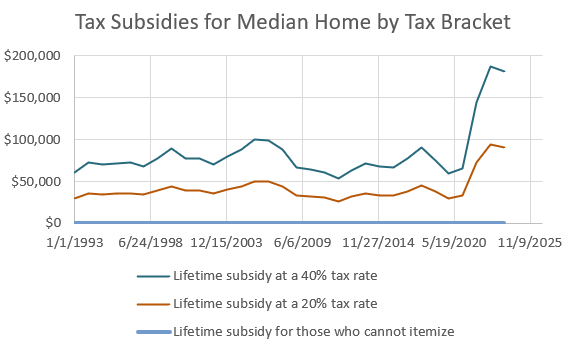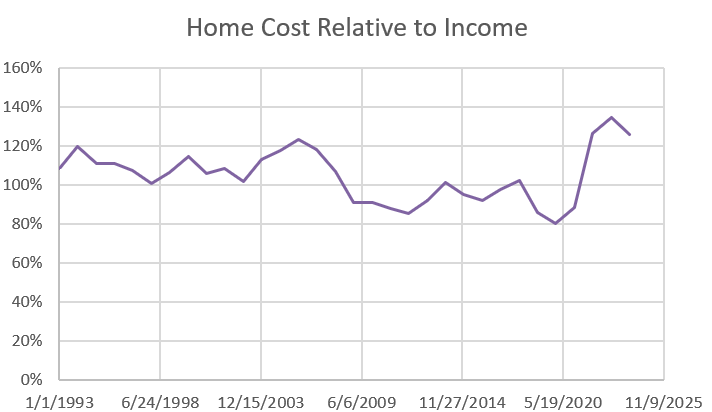Colin Read • August 1, 2024
Inflation and the Fed - August 4, 2024

We have been engulfed in significant news events over the last couple of weeks. It’s time to seek the comfort of a more relaxed discussion - about inflation.
If you ask people whether they feel good about the economy, they won’t cite a very low unemployment rate in the U.S. that has ticked up slightly to a still low 4.3%, or mortgage rates that have retreated a bit from their highs. They won’t note that U.S. GDP growth is strong, and stronger than expected, and they will likely not note that wage growth has been strong as well, as is the growing number of people now participating in the labor force, after many sat on the sidelines for years.
All this is good news. But, it is overshadowed by people’s sense that inflation has outstripped wages. They are correct.
On the reassuring side, we have in this blog favored a measure of the most recent inflation experience as a policy variable. If we want to take a pulse on inflation, it is not helpful to measure events that may have occurred ten or eleven months ago. For that reason, I have advocated for the three-month annualized inflation rate that I calculate for this week’s graph.
This annualized conversion of what has happened more recently gives us a better picture of what we ought to do going forward. Based on that measure, every significant inflation indicator is now exactly where the Federal Reserve wants it to be. Today’s graph shows that all measures are now right around or below 2%.
That is good news to relax tight monetary policy designed to slow the economy down. Supporting their likely conclusion is that net job creation is still positive, but has weakened a bit. More people are returning to the labor force than new jobs created of about 114,000 last month in the U.S., so the imbalance pushed up the unemployment rate. This perceived slowdown gives the Fed the justification to lower their interest rate and wait to see how the data comes in over the rest of the year. Based on that guidance, it is likely the U.S. Federal Reserve will lower their Discount Rate, which is now hovering a little above 5.25%
While the Fed is designed to be insulated from political interference, it is not entirely immune. I have been critical of the Fed dragging its feet and letting inflation take hold a few years ago at the same time it was awaiting a decision by President Biden whether or not to renew the appointment of current Fed Chair Jerome Powell. Powell is unique in that he is not an economist. Rather, he studied political science, so a bit of politicization of the Fed is understandable, if not lamentable. The Fed's belief that the supply-constricted inflation would be transitory resulted in inaction that allowed inflation to get a foothold like no other since 1980.
Some believe that the Fed has already waited too long to reverse their inflation-fighting tightening. The politics of all this seems to suggest that the Fed will acquiesce and lower the discount rate by 25 basis points, a quarter of a percentage point, and maybe even twice that, at its next meeting in September. There are only three scheduled meetings left for the Fed, and only the September meeting will occur before the federal election. At that meeting, the Fed also conducts its annual assessment of economic projections, and will have in the bag both the consumer and producer price indices for August. They will likely have a six month track record of inflation by all measures around 2%.
A lowering of the interest rate will be a positive indicator of the end of tight monetary policy and a shot in the arm for the incumbent national leadership. On the other hand, a delay could be viewed as an attempt to tilt the balance toward a future Trump administration, even if current inflation indications and Fed comments seem to suggest a discount rate drop sooner rather than later. Even as a slowdown and talk of a recession are already troubling to the incumbent running for president. This has put the Fed in the awkward position of delays that may cost an election.
The Fed will not want that spector. They would normally argue that, since the economy has been doing very well of late, and inflation is in line, a lowering of the interest rate is unnecessary. And, new data always has a positive probability of some renewed inflation. Their conventional thinking has typically been to punt and argue the safe thing to do is to hold the interest rate constant, especially given that a 5%ish discount rate was more the norm rather than the exception for decades before the Great Recession of 2008.
But, alas, politics may trump policy, so I am sticking with one downward movement of the discount rate this year, at the September meeting, unless things change dramatically over the next eight weeks. The improvement will be a bit of a Harris reprieve, even as her opponents will try to argue it is a sign the economy is terrible.
Nonetheless, the move may give little consolation to the majority of households who perceive that prices have risen faster than wages.
A labor shortage for lower wage jobs have allowed their wage increases to exceed inflation over the past couple of years. In addition, the wealthy who generate income from investment have also fared well. Both these categories pay relatively little in income taxes. Those who earn near the minimum wage typically pay no tax and may receive tax credits. The wealthy have seen spectacular growth in the value of their stocks, despite the slight pullback this week that sends a clear message to pressure the Fed to make a rate cut. Unless shareholders have sold their stock, they have paid no taxes on recent gains, and only a modest tax below many middle class tax rates on any dividends that may have been paid out to them.
Hence, both the lower and upper income segments of society fared pretty well with their income that outpaced inflation. Corporations too have done well because the high (by U.S. standards) inflation rate gave companies tremendous latitude to raise prices, and economize in product volume, for instance in the content in cereal boxes. Whether their costs actually rose significantly is immaterial. They knew that consumers would not look twice if, for instance, their broadband cost went up by 25% with no change in the level of service or equipment. Such price gouging resulted in a strong increase in corporate profitability and record levels for the various stock market indices.
The middle class suffered the brunt though. Most American middle class wages did not go up as quickly as inflation. In addition, while we pay the full burden of price increases, any wage increase is also reduced through federal and state income taxes. And, the ratcheting up of home prices also meant that our tax assessments magically rose as municipal councils refused to lower the tax rate as quickly as tax assessments rose.
Granted, the federal tax brackets tend to readjust over time to counteract inflation, but these adjustments occur between twelve and twenty four months, or longer, after the inflations have occurred. By then, even more inflation and taxes have eaten away our take home pay.
These are the reasons why those on the low to moderate side of the middle class, and those most often surveyed, report that they feel poorer. Their take home pay has not kept up with rapidly escalating taxes, utility costs, repair bills, services provided by lower income workers, and food costs. If lower income and higher income households are earning more, it is because their higher earnings are being passed onto the prices paid by middle class households.
A discount rate reduction in September, and perhaps one in December or January, will be little relief for these middle income households. The fact is that their wages will likely never fully catch up to the price increases we all faced.
So, despite market euphoria from all the other economic data, those surveyed in the Consumer Economic Conditions and Index of Consumer Satisfaction surveys remain somewhat pessimistic. An indicator that is usually in the 90 to 100 range has been languishing around 60 or 70 since Covid and has even taken a significant dip in the last couple of months, all data aside.
Maybe people in the real world know something that traditional economic variables don’t measure, but I allude to here. It is not one variable at a time that makes a difference. It is how the confluence of many variables impinges on the ability of middle income households to feed and house their families, and how much is left over for the station wagon trip to the campgrounds or to see grandma and granddad when all is paid for that is an indicator of the financial health of the widest swathe of society.









